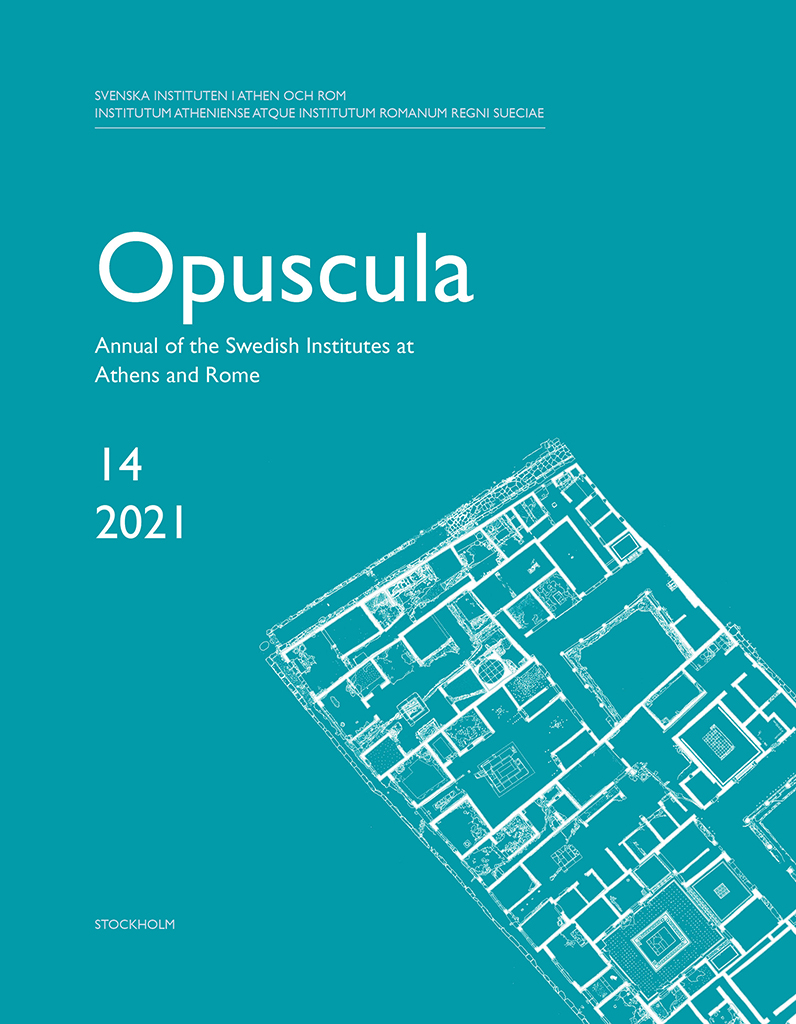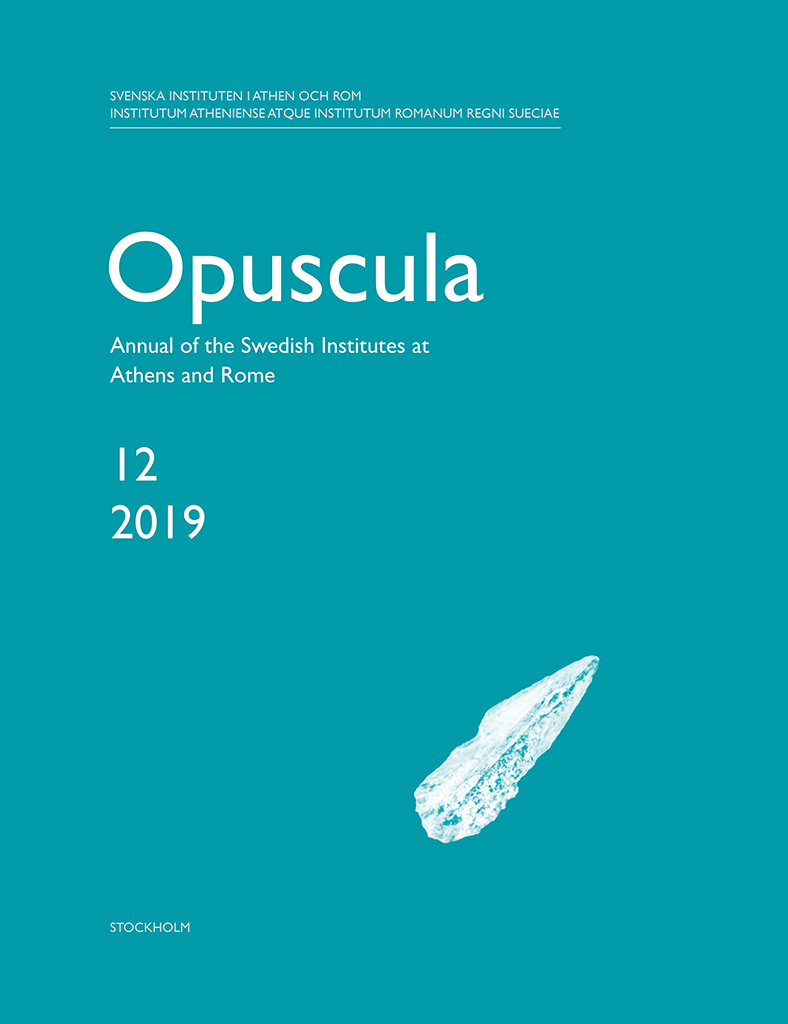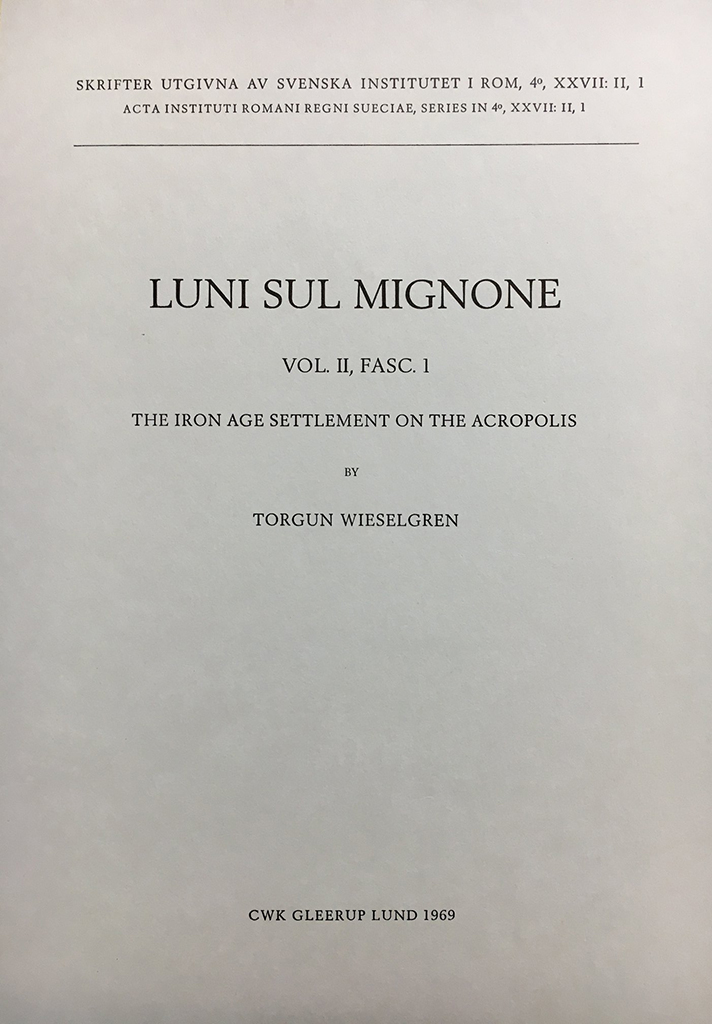Opuscula is published by the Swedish Institutes at Athens and Rome, with the aid of a grant from the Swedish Research Council. Distributed by Eddy.se AB. View journal at ERIH PLUS. All content available with open access. The death of infants in Early Iron Age Cyprus. A jar burial from Kition-Bamboula By Sabine Fourrier (Maison de l’Orient et de la Méditerranée Jean Pouilloux, France) & Anna Georgiadou (University of Cyprus, Cyprus), in collaboration with Bérénice Chamel (Maison de l’Orient et de la Méditerranée Jean Pouilloux, France), Nathalia Denninger (Bibliothèque Nationale de France, France), Armelle Gardeisen (Université Paul Valéry, France), Katerina Papayanni (National and Kapodistrian University, Greece) & Tatiana Theodoropoulou (Cultures et Environnements Préhistoire, Antiquité, Moyen Âge, France) Abstract During recent excavations of the French Archaeological Mission at Kition-Bamboula, in modern day Larnaka, Cyprus, an infant jar burial was discovered. It was found under a floor layer in a domestic context, and is dated to the beginning of the Late Cypriot IIIB period (end of the 12th– early 11th century BC). This jar burial is part of a series which seems to be attested, at least in the present state of documentation, only in eastern Cyprus (Enkomi, Salamis and, on a…
Opuscula is published by the Swedish Institutes at Athens and Rome, with the aid of a grant from the Swedish Research Council. Distributed by Eddy.se AB. View journal at ERIH PLUS. All content available with open access. Greece and the Levant in the 10th–9th centuries BC. A view from Tel Rehov By Amihai Mazar (The Hebrew University of Jerusalem, Israel) & Nota Kourou (University of Athens, Greece) Abstract Tel Rehov in the Beth Shean Valley, northern Israel, yielded 14 Greek (mainly Euboean and Attic) pottery sherds from the Late Protogeometric to Middle Geometric periods. This is the largest number of Greek sherds from these periods found at a single site in the Southern Levant in stratigraphic contexts. Since the Tel Rehov strata, well-dated by a large number of 14C dates, yielded some of the richest assemblages of finds from the 10–9th centuries BC in this region, the Greek sherds provide an opportunity to examine both their absolute dating in context and to discuss the nature of the relations between the two regions. Six of the 14 sherds were published previously (Coldstream & Mazar 2003); in the present paper, we describe the finds from Tel Rehov and other sites in the…
Opuscula is published by the Swedish Institutes at Athens and Rome, with the aid of a grant from the Swedish Research Council. Distributed by Eddy.se AB. View journal at ERIH PLUS. All content available with open access. The Swedish Jordan Expedition 2014 at Tall Abu al-Kharaz. Preliminary results from Areas 12 and 13 By Peter M. Fischer & Teresa Bürge Abstract In previous seasons excavations have concentrated on the periphery of the city of Tall Abu al-Kharaz, a multi-period tell in the Central Jordan Valley. Tall Abu al-Kharaz flourished from the Early Bronze to Islamic times, from roughly 3200 BC to the 10th century AD. The main object of the field work in 2014 was to investigate the area around the geographical centre of the city (Area 12). Preference was given to further investigation of the Iron Age sequence, i.e. the period from the 12th to the 7th centuries BC (local Phases IX–XV). Another task was to extend the excavations in the northern part of the city, Area 7, which produced essential information on the Iron Age, towards the south (Area 13) in order to generate a coherent picture of Iron Age occupation in the city’s northern half. Domestic structures…
Opuscula is published by the Swedish Institutes at Athens and Rome, with the aid of a grant from the Swedish Research Council. Distributed by Eddy.se AB. View journal at ERIH PLUS. All content available with open access. The Swedish Jordan Expedition 2013 at Tall Abu al-Kharaz. Preliminary results from Areas 9, 10 and 11 By Peter M. Fischer & Teresa Bürge Abstract The Swedish excavations at Tall Abu al-Kharaz, a twelve-hectare tell in the central Jordan Valley, continued in 2013 in order to shed further light on the Iron Age occupation of this city that was first settled around 3200 BC, corresponding to the conventional Early Bronze Age IB. The Iron Age occupation lasted from the 12th century BC until 732 BC, when the city was conquered by the Neo-Assyrians. From 2009 to 2012, excavations in Area 9 revealed an exceptionally well-preserved two-storey compound dating from Iron Age I (local Phase IX), i.e. around 1100 BC. The stone compound was exposed for a length of 46 m. It consists of 21 rooms, with walls still standing to a height of more than 2 m. Several hundred complete vessels and other objects point to the extensive contacts of a fairly rich…
Published by the Swedish Institute of Classical Studies in Rome. Distributed by Astrom Editions. The Iron Age necropolis of Sorbo at Cerveteri By Ingrid Pohl Bibliographical information Ingrid Pohl, The Iron Age necropolis of Sorbo at Cerveteri (Skrifter utgivna av Svenska institutet i Rom, 4°, 32), Lund 1972. Softcover: 322 pp. ISSN 0081-993X. ISBN 9789170420023.
Published by the Swedish Institute of Classical Studies in Rome. Distributed by Astrom Editions. Luni sul Mignone. Results of excavations conducted by the Swedish Institute of Classical Studies at Rome and the Soprintendenza alle Antichià dell’Etruria Meriodionale Vol. 1 not yet published Vol. 2. Excavations and finds. Iron Age, Etruscan, Roman and Medieval periods Fasc. 1. The Iron Age settlement on the Acropolis Abstract Luni sul Mignone, the small hill which will be remembered for its important remains from the Bronze Age and for the Monumental Iron Age building, has also brought to light less important remains from the latter period, which will be dealt with in the present report. It was during the third Luni campaign, led by Dr Carl Erik Östenberg on behalf of the Swedish Institute in Rome, that I was asked to undertake an excavation on the NE side of the Luni plateau. In the hope of finding remains of habitation we started where there still seemed to be enough earth to produce a stratification, since higher up where the earth-layer was only 20-15 cm deep, no traces had been found. A trial trench revealed that the place had been inhabited during the Iron Age. In…





